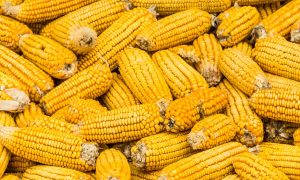China’s wheat harvest risks seven-year low as farmers battle drought

China’s wheat output may drop up to 5% in 2025, the lowest since 2018, due to drought in key regions like Henan and Shaanxi. Despite ample stockpiles and weak demand, the decline raises food security concerns. Climate change-driven extremes and pest infestations are stressing crops. Authorities are responding with emergency measures, while farmers face rising costs and uncertain weather ahead.
China’s wheat output could drop as much as 5% this year to the lowest since 2018, after recent drought in key growing regions stressed the crop.
Although that would be a sizeable decline from last year’s record haul of 140 million tonnes, ample stockpiles and relatively weak domestic demand are likely to cushion the impact and prevent a supply shock. Still, it would be an unwelcome development for a government focused heavily on food security, and could force a rethink on imports.
The world’s top producer and consumer of the grain is expected to harvest between 133 million and 135 million tonnes in 2025, according to a survey of five traders and analysts, who declined to be identified discussing sensitive information. The lower figure would be would be the smallest crop since 131 million tonnes seven years ago.
China is trying to insulate its agricultural supplies from intensifying geopolitical risks, particularly unresolved trade hostilities with the US, one of the world’s main exporters. Beijing imposed a 15% tariff on American wheat in March, at a time when import demand was light. In the first four months of the year, overseas purchases were at a seven-year low for the period of just over one million tonnes.
But increasingly frequent bouts of extreme weather caused by climate change are forcing rapid adjustments in supply channels. The last scare to hit the wheat crop was only two years ago, when heavy rains damaged plants and propelled annual imports to a record of more than 12 million tonnes. Wheat is a dietary staple in China, particularly for noodles and dumplings, as well a substitute grain in animal feed.
This time around, the problem is at the other end of the spectrum: high temperatures and persistent dryness that have hardened the soil and withered crops. Damage has been most pronounced in the wheat growing regions of northern China, including the top producing province of Henan, as well as Shaanxi.
Those two were among a cluster of provinces that experienced significantly below-average precipitation in May, according to the weather bureau. Some parts of Henan and Shaanxi were designated as suffering from exceptional drought — the worst conditions according to the Chinese grading system.
Pest problems
Official forecasters, like the International Grains Council and the US Department of Agriculture, haven’t changed their estimates to reflect the weather concerns. Both still expect crops of 140 million tonnes or more.
State media in China have reported on the worsening conditions ahead of this summer’s harvest, including earlier and more frequent pest infestations. The authorities have responded by issuing alerts, freeing up emergency funds and mobilising producers to improve irrigation and boost crop nutrition. But the additional expense is a heavy burden to many farmers surviving on already low margins.
Although rains at the weekend brought some respite to parched northern regions, another heat wave is building for later in the week. Temperatures as high as 38C (100F) are forecast.
“The weather is indeed getting abnormal — it doesn’t rain when it should,” said a farmer in Hebei, another large wheat province, who only gave his family name Li.
Li said extra irrigation, although costly, was enough to stave off concerns over his farm’s wheat crop. The worry now is getting sufficient rain before the summer planting of corn begins at the end of June, he said.
On the wire
China’s push to move heavy industry into its western regions is hurting air quality there even as it improves for the nation as a whole, according to a new report from the Centre for Research on Energy and Clean Air.
Central banks have emerged as a driving force behind the record-breaking bull market for gold, and while the true scale of their buying is shrouded in mystery, nobody expects them to stop.
When US President Donald Trump took aim at China with record tariffs, the country’s firms shrugged it off.
To Read more about Wheat News continue reading Agriinsite.com
Source : The Edge Malaysia

















